Don’t waste your money on a product that will end up dusty in a drawer, read on as we explain each feature in detail and what it means for you.
1. Stroke Depth
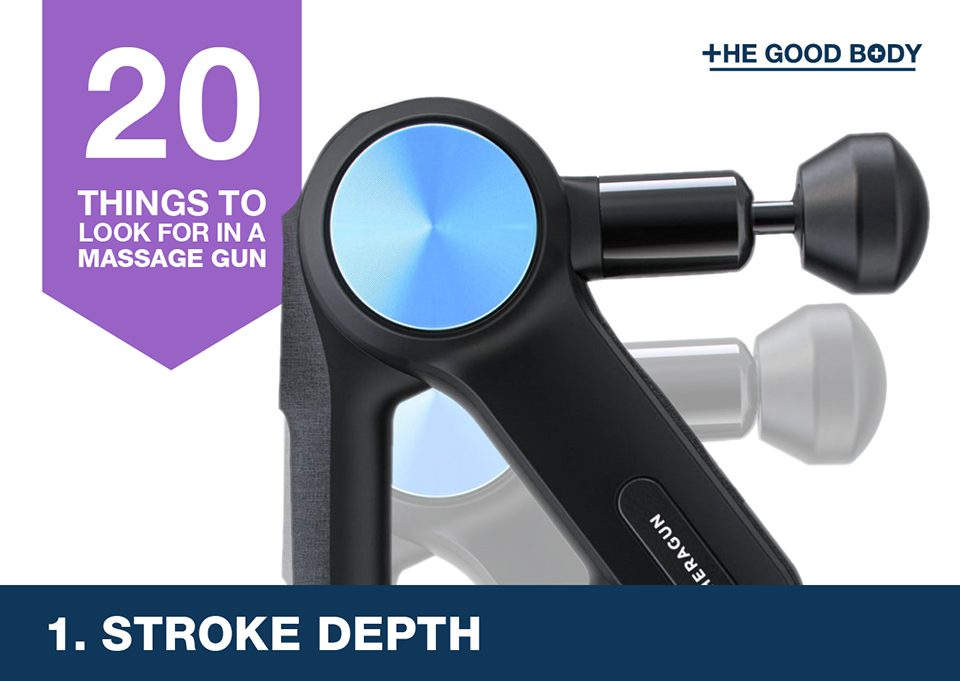
One feature of a gun massager that manufacturers shout about is the stroke depth.
This is the depth to which the massager will power into your muscles and is typically quoted in millimeters.
To give you an example, the top models in Theragun’s latest collection reach 16mms into the muscles.
You will find alternatives that go deeper, however don’t feel like you simply need to find the device that goes deepest.
Theragun states that 16mm amplitude is optimum for deep muscle treatment, and depending on your build less depth will certainly still do the job.
2. Percussions per Minute (PPM)
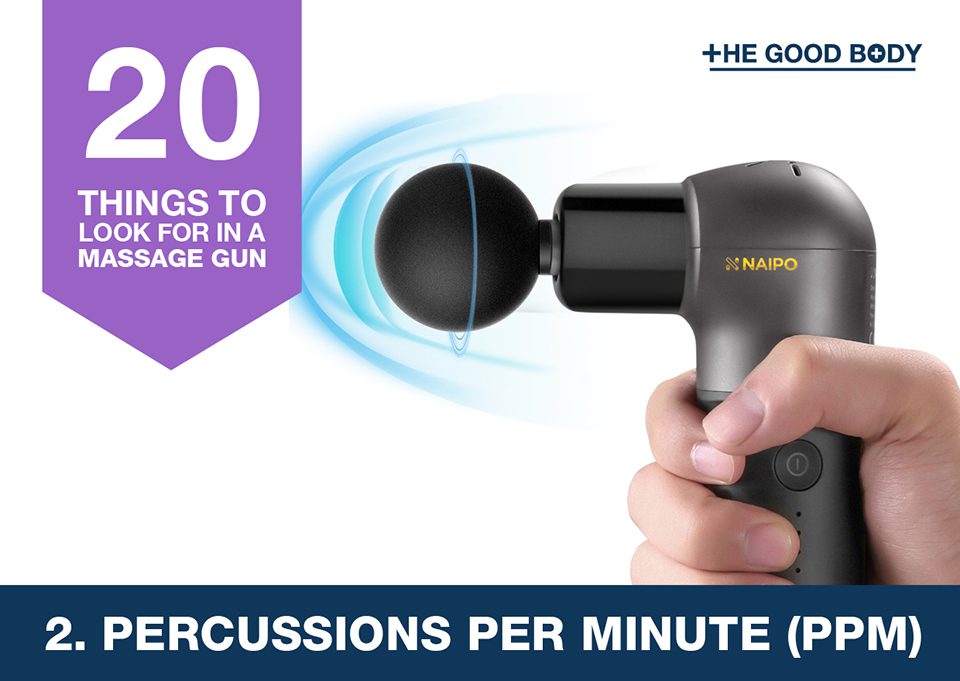
PPM or Percussions per Minute, is just as it sounds, how many thumps your body effectively takes in a minute!
Quoted in thousands, it gives you an indication of the power of the product.
More percussions = more power.
One important thing to remember is that you need to balance the PPM quoted with the stroke.
A device with a shorter stroke depth will naturally provide a higher PPM as it isn’t going as deep.
3. Force
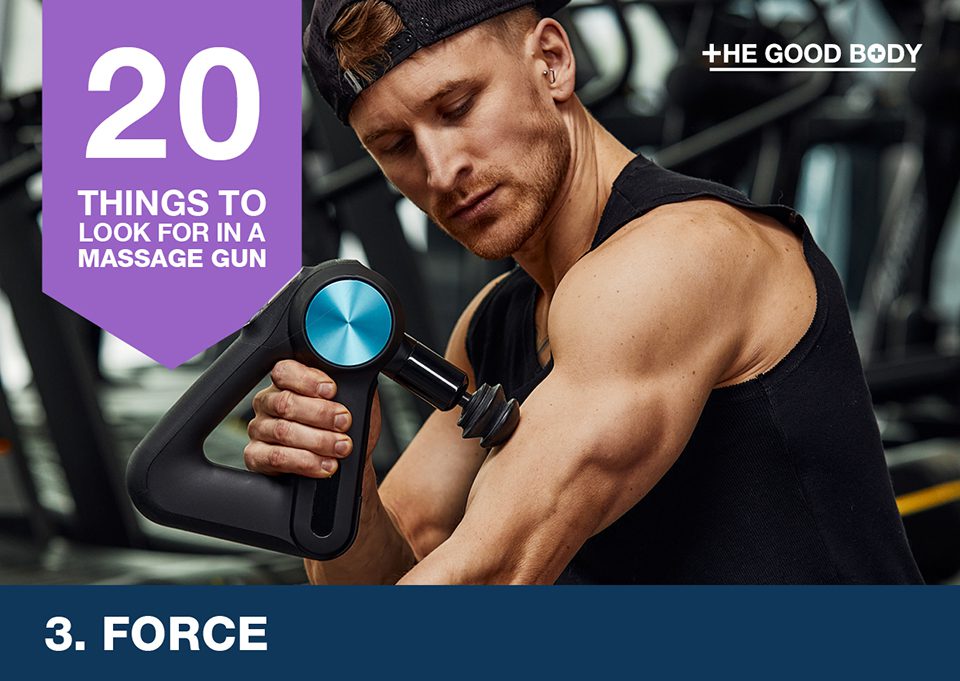
Stall force is shown in pounds, and is the amount of applied pressure a device can take without stalling.
As a general rule, the higher the no-stall force the better, especially if you have a muscular build.
Despite better though, it really does depend on your size as to whether you’d need the full force on offer.
In a similar way to stroke depth, for many the lower levels of force available on the market would be more than enough.
4. Speed Settings
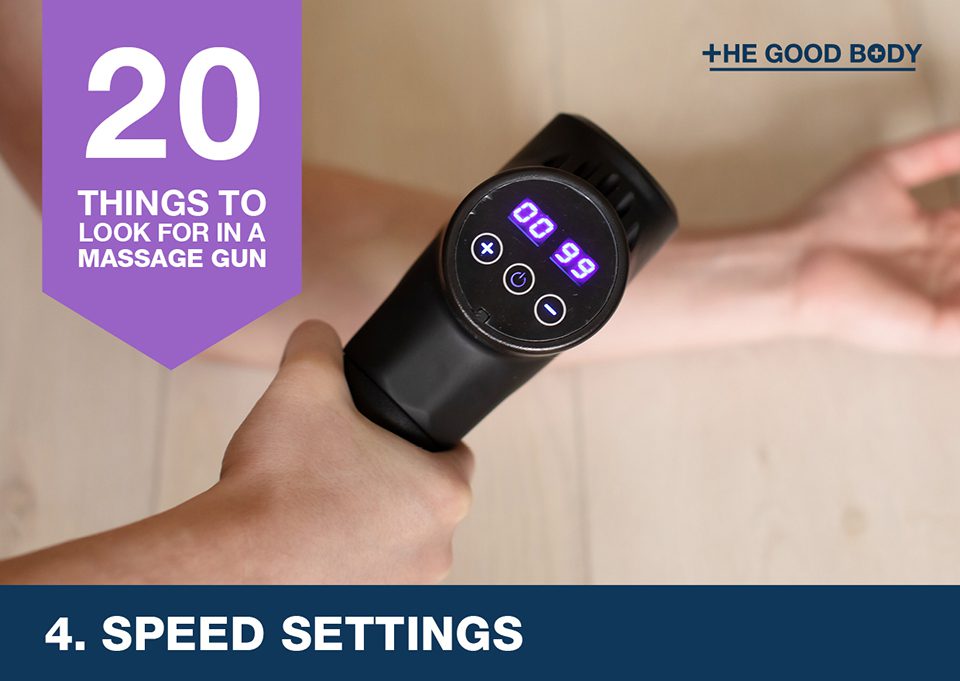
Think of speed settings like the volume of the device, increments in which you increase/decrease the number of percussions (PPM).
Some massage guns have speeds on the display (eg. 1-5). Others show the number of PPM the tool is delivering, and offer a customizable speed range.
A choice of speed settings can be valuable as it gives you more control over your treatment.
It also allows you to treat different areas of your body with varying intensities.
We should note that a higher number of speed settings doesn’t mean one gun is more powerful than another.
It simply means the power can be increased or decreased in smaller increments.
5. Rotating Arm
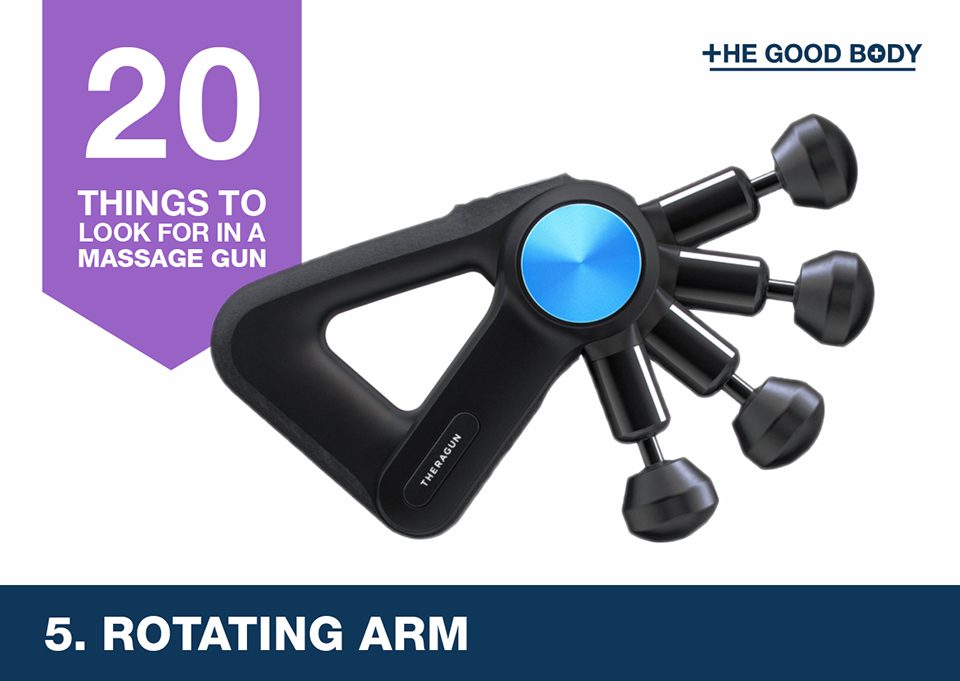
You’ll notice when shopping around that massage guns are all different shapes!
A number have a rotating arm, allowing you to treat pretty much anywhere on your body much more easily.
When paired with different grip positions, you get numerous combinations to apply percussion therapy to even the most hard to reach areas.
6. Grip
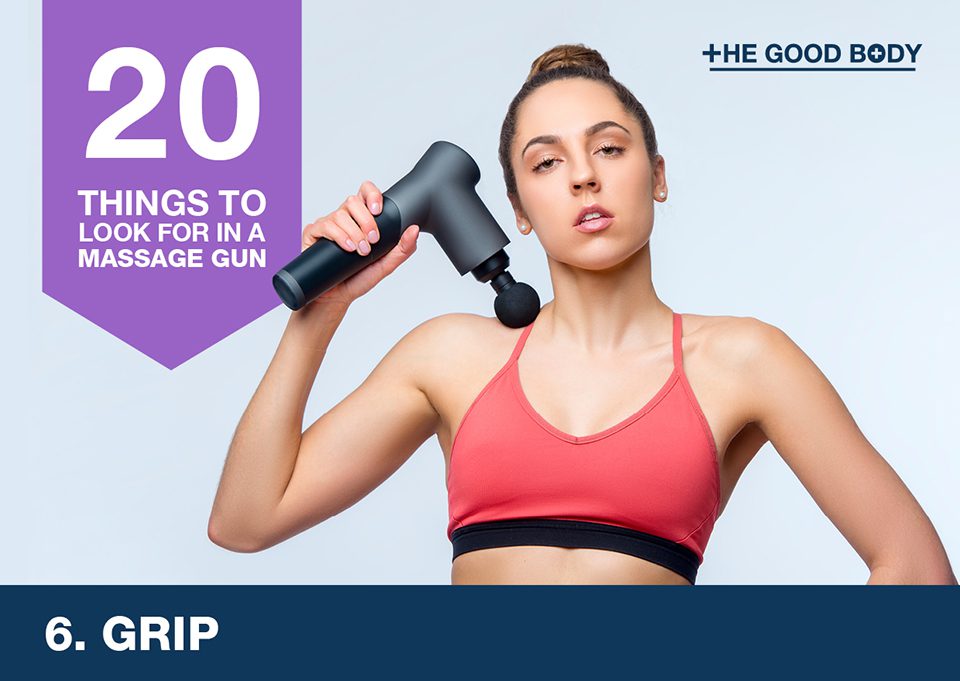
Grip really comes down to personal preference and where on your body you plan to use the massager.
Consider the grip offered and whether you’d feel comfortable holding it for a long period of time.
Some are a handle, others are more triangular shaped, both can be effective for your treatment.
7. Attachments
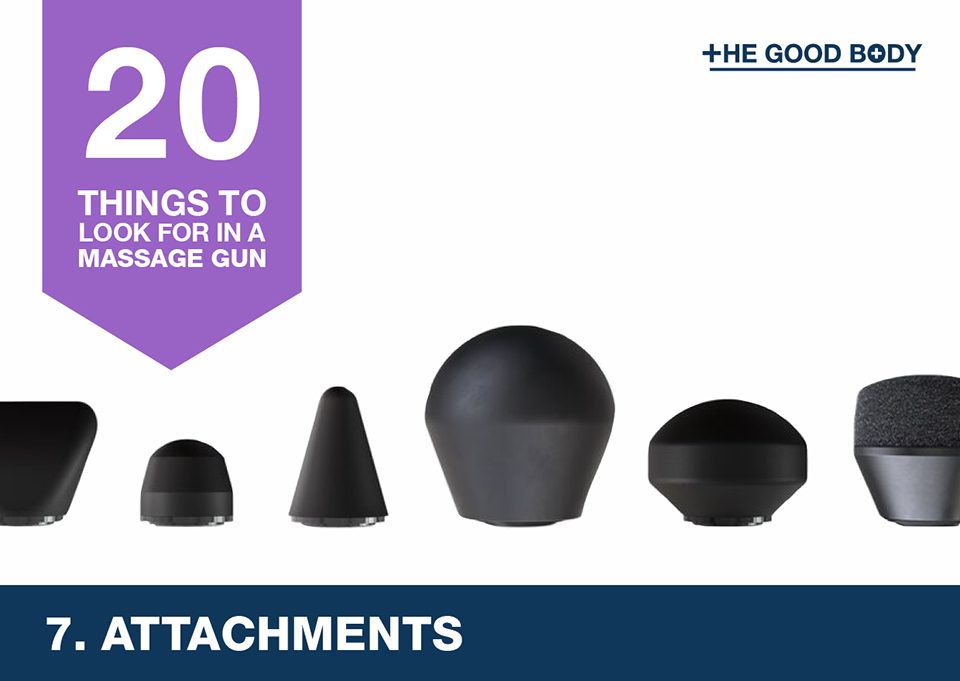
One way that companies aim to differentiate their massage guns is through the attachments that ship with the device.
Typically they offer at least a couple of heads, carefully created to work on different areas.
For example, a large ball head for bigger muscle groups or a pointed head to target trigger points.
Many manufacturers also give you the option to buy additional attachments, which is something to bear in mind if the massage gun you love doesn’t have the head you want.
8. Controls
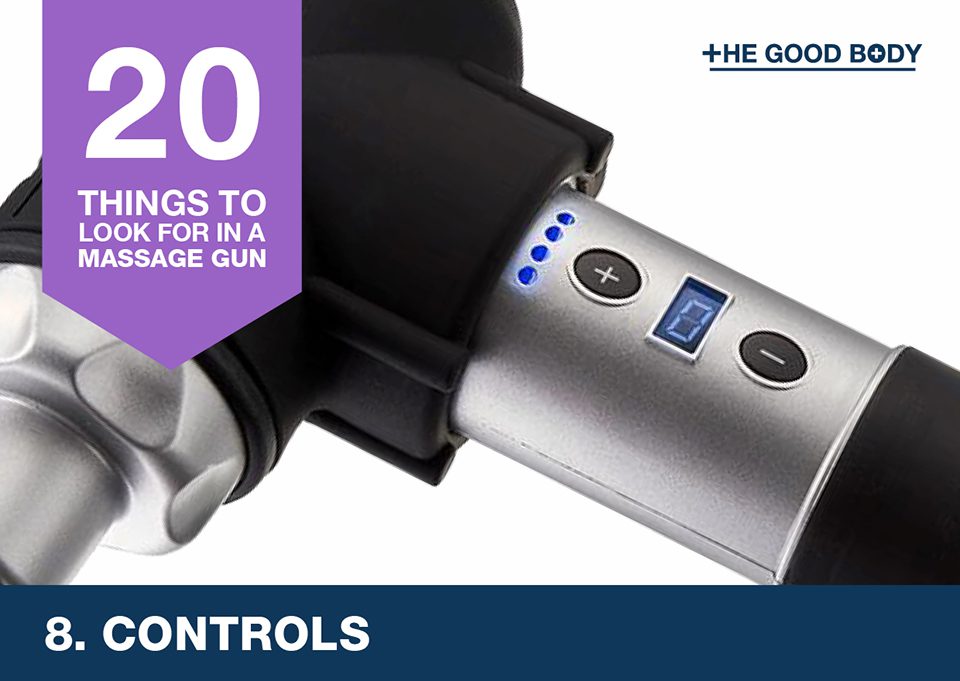
The way you control a gun massager differs between products.
Some have a simple series of buttons that allow you to access all the product’s capabilities. Others feature a touchscreen to scroll through the options.
As we’ll discuss a little more below, you can even find massage guns that you can control via an app from your smartphone.
Think about how confident you are using new technology. The last thing you want is to invest in a percussive massage gun that feels too complex for you to use.
That being said, most are operated in a way that is methodical. Also the range of settings, unlike other devices such as a tens unit, are fairly limited.
9. Bluetooth
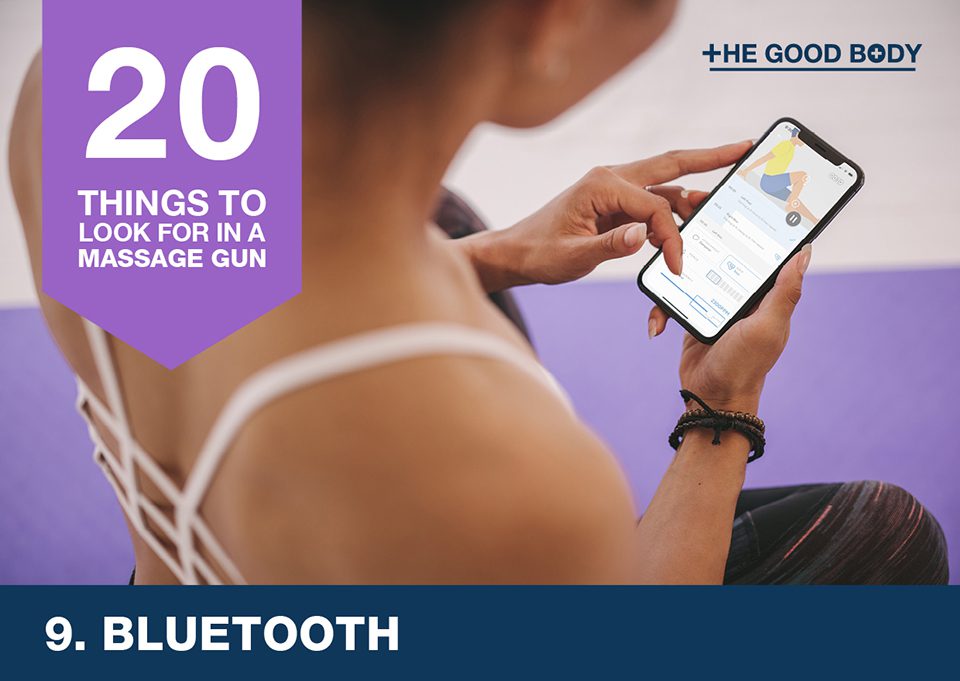
Gun massagers can have built-in Bluetooth, enabling them to be paired with the manufacturer app.
This gives you access to various programs and personalized routines.
10. Wi-Fi
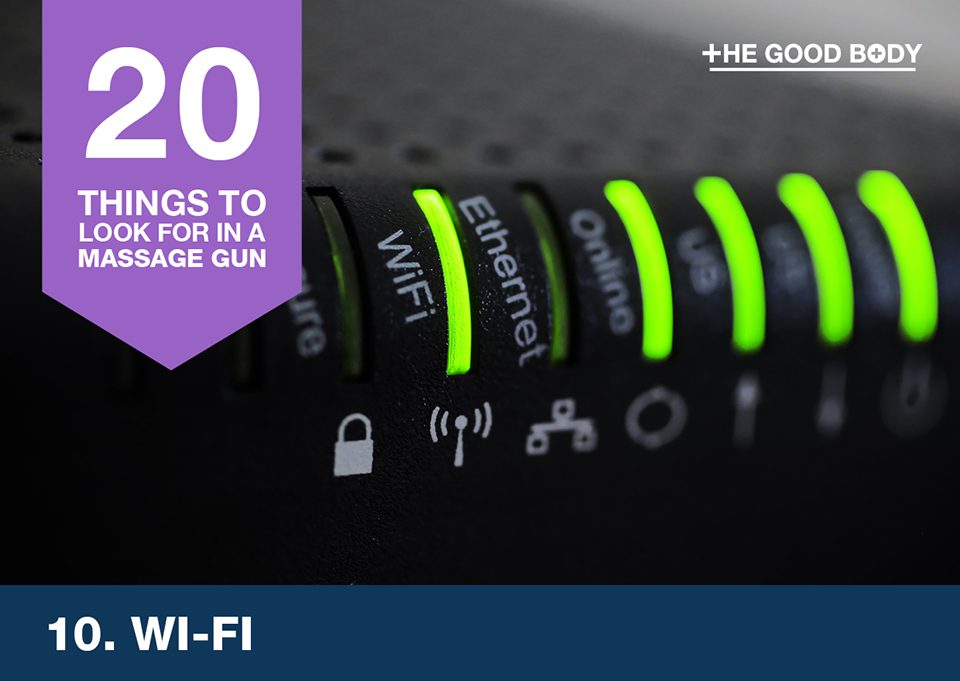
Wi-Fi enabled massage tools have built-in guided programs to help you get more from your treatment.
Automatic software updates can mean new programs and treatments are regularly available on your device.
This can make you feel like you have a new gadget every few months!
11. App
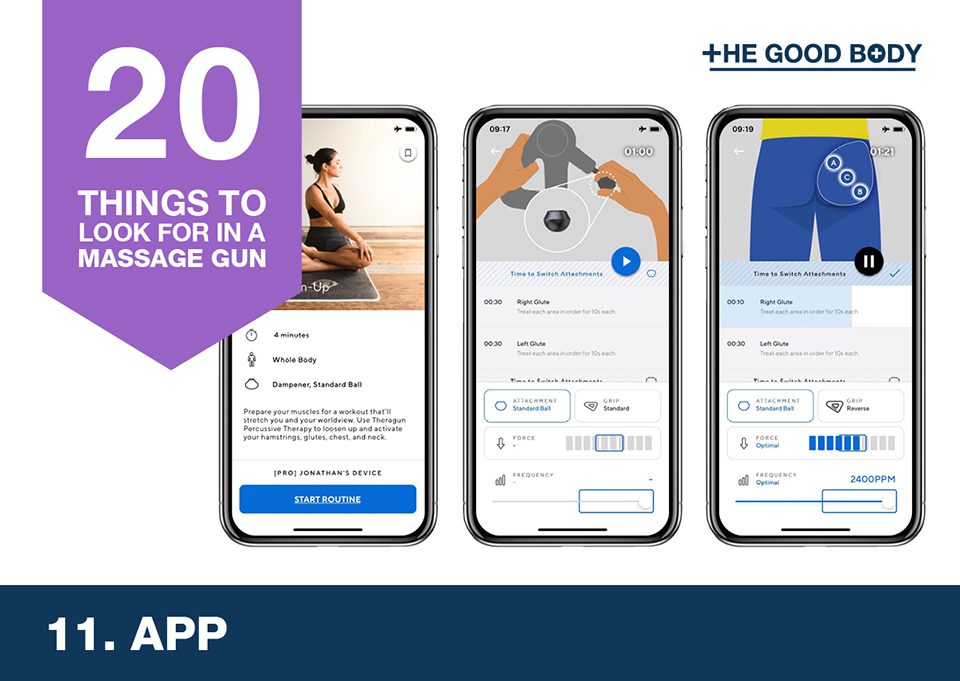
We’re all used to downloading apps to support products we buy these days.
However is an app a useful addition to a massage gun?
With many devices it means you can control the settings, which can be useful as we all typically have our smartphone close to hand!
You can also get guidance on where to position your tool and a range of different programs and treatments to explore.
12. Noise Level
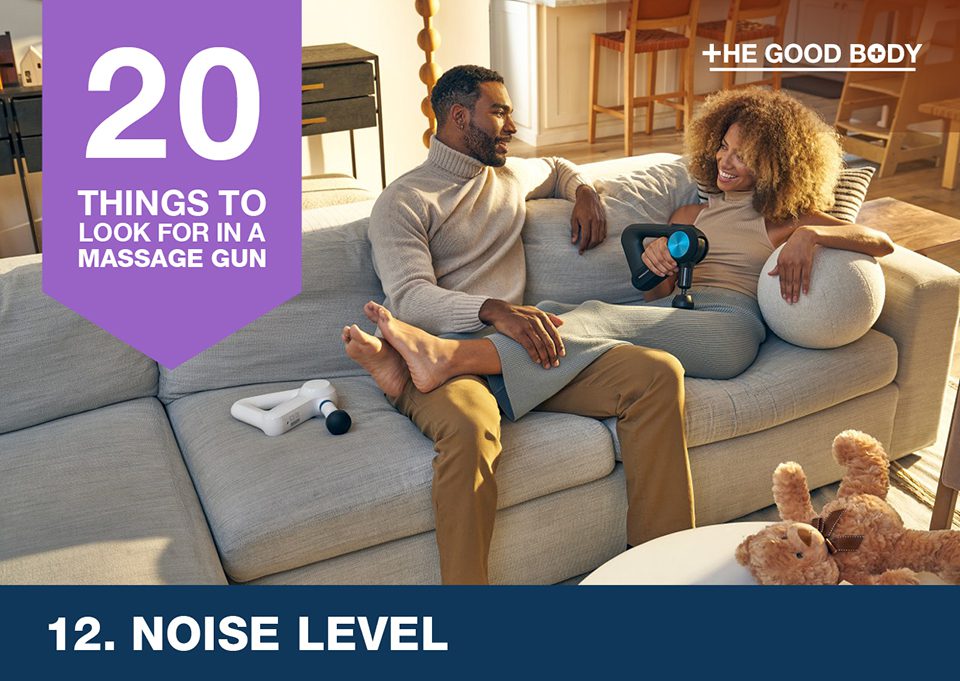
Noise level can be a major consideration for many people when shopping for a gun massager.
Manufacturers quote the noise level of the device in decibels (dB). This can range anywhere from 10 dB to 70 dB.
Some manufacturers won’t quote the level itself, instead referring to the grade of the motor used or the fact that it’s brushless.
(Brushless motors typically deliver a softer sound as they need less power to work)
Consider where you’re going to use your massager, if you want to use it in a busy gym then a noisy tool might go unnoticed.
13. Battery Life
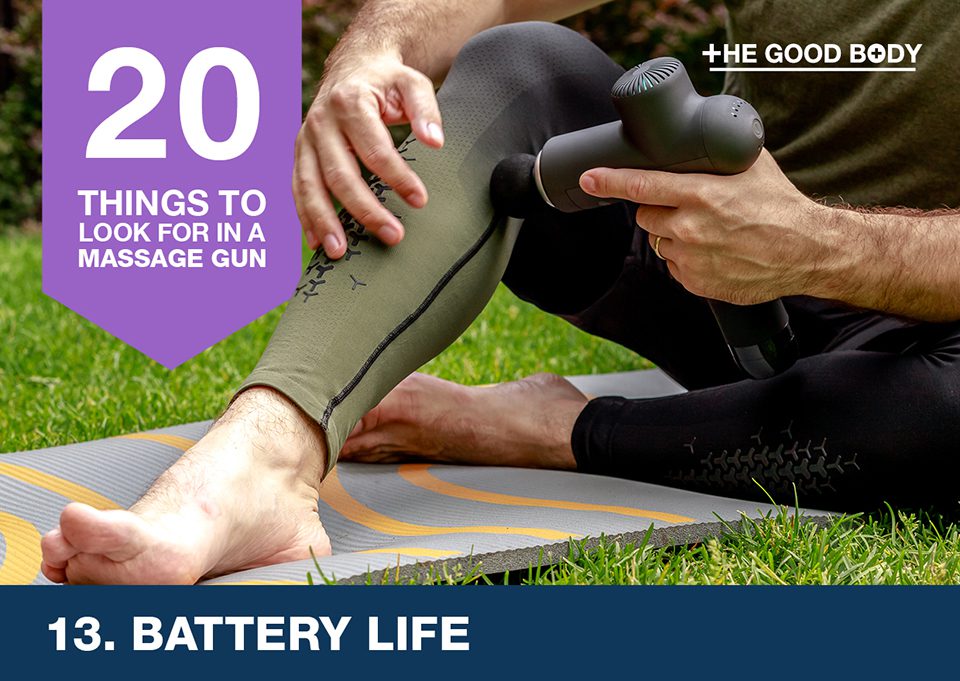
Most percussion massage guns on the market today will include a rechargeable battery.
Take a look at the quoted battery life and think about whether it meets your needs.
Many of the pricier models, such as the Theragun PRO, ship with interchangeable batteries, so you can use one and have the other on charge.
They’re great as you never have to experience the frustration of running out of power mid-treatment!
14. Carrying Case
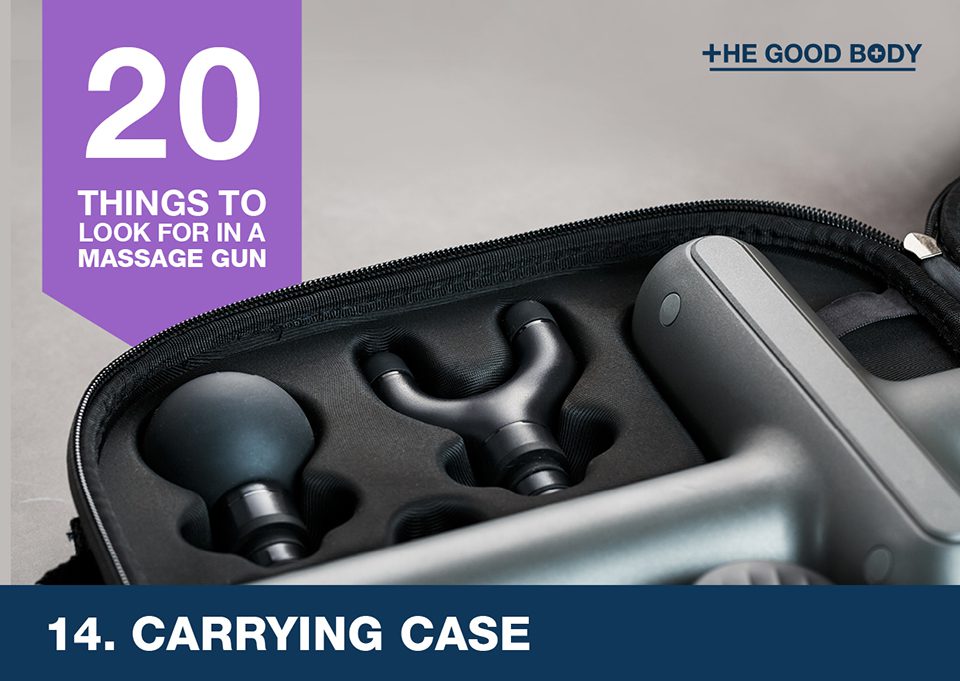
When considering devices, look at whether a carrying case is included in the cost.
Some massagers ship with a case, or a well-designed storage box that could work as one, whereas other companies sell them separately.
15. Size
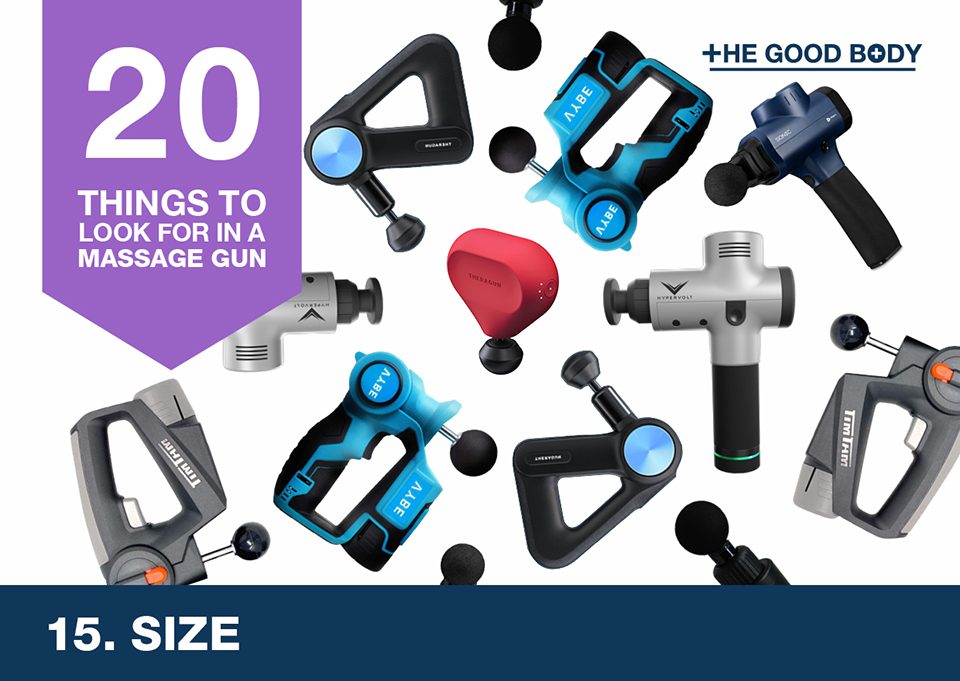
Size is worth assessing, as it will determine how you hold and handle the device.
In recent years there has been a surge in manufacturers releasing ‘mini’ gun massagers, that promise the power of a bigger tool in a smaller package!
For many they could pack the punch you need. However if you’re a real fitness fanatic then a full size tool might provide more versatility.
16. Weight
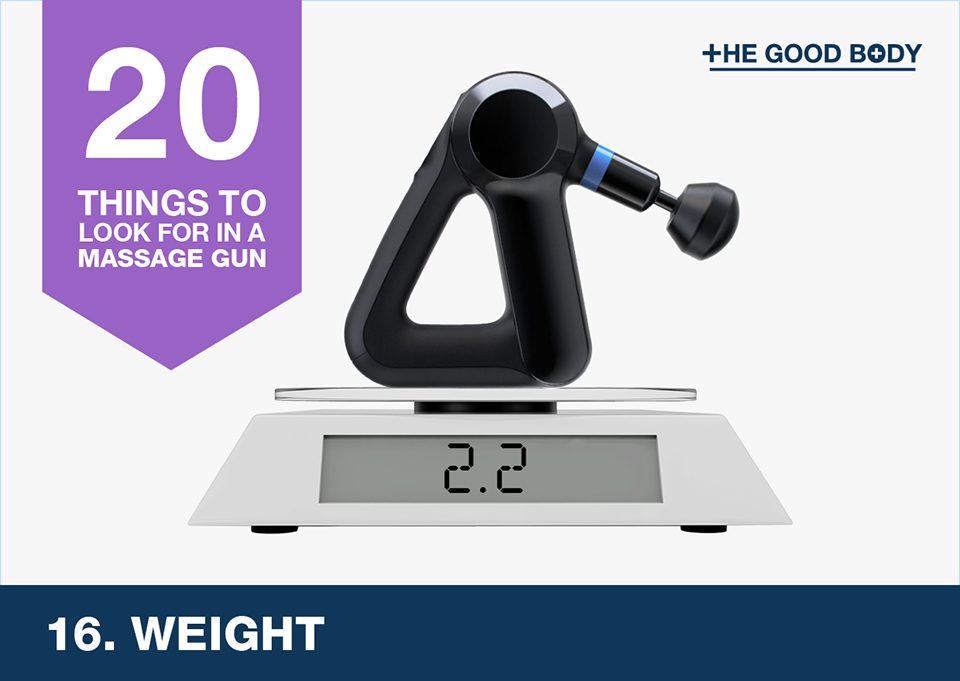
You could end up holding your massage gun in place for a long period of time, so make sure it’s not too heavy
Positioning a heavy massager when trying to treat hard to reach areas is also more challenging.
Typically percussion massage guns weigh under 3lbs, but it’s always worth checking before you make a purchase.
17. Price
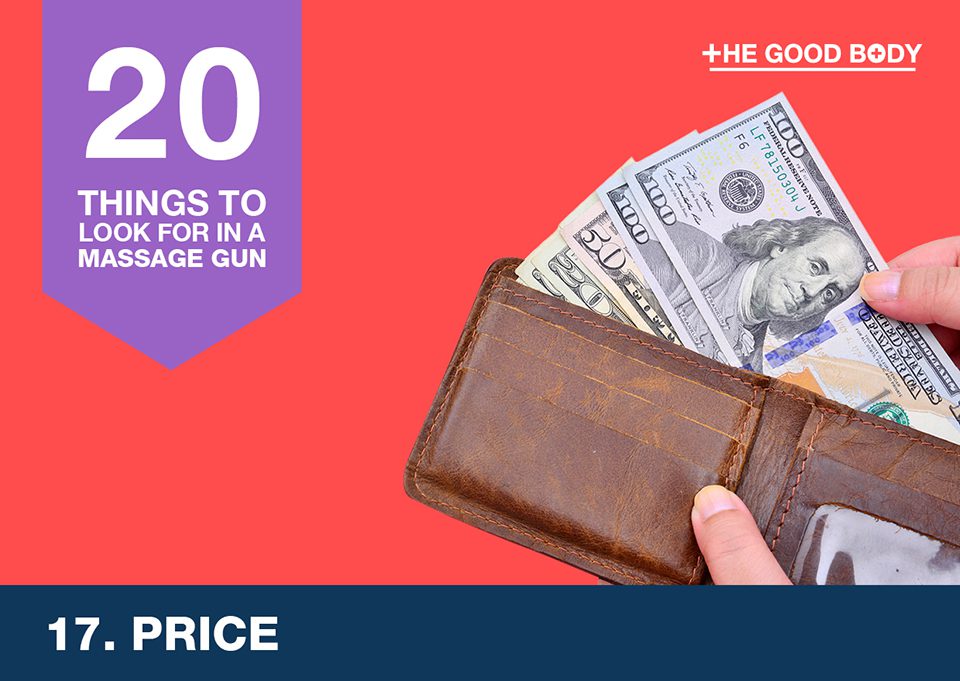
Due to many unknown brands entering the market, prices really do vary wildly.
To give you an idea of cost, percussion massage guns can range in cost anywhere between $50 and $600.
Create a budget before you start shopping so you don’t spend more than you need.
18. Guides and Manuals
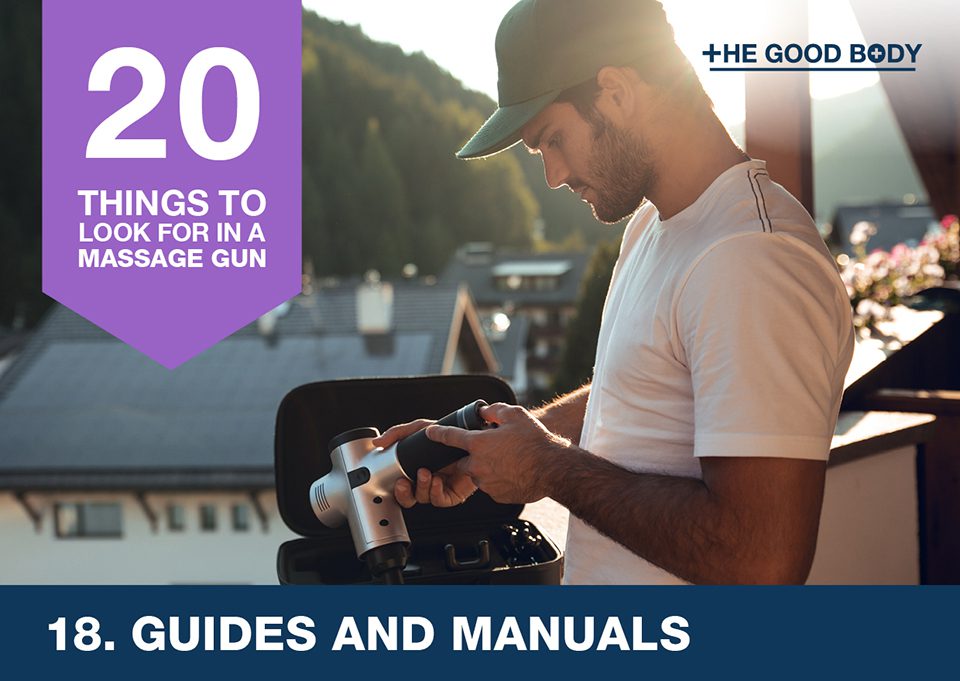
If you’re completely new to this form of massage therapy, then you might appreciate additional guidance from the manufacturer.
A supporting app as mentioned above can be useful, as well as instructions and advice on their website or in the manual.
19. Warranty
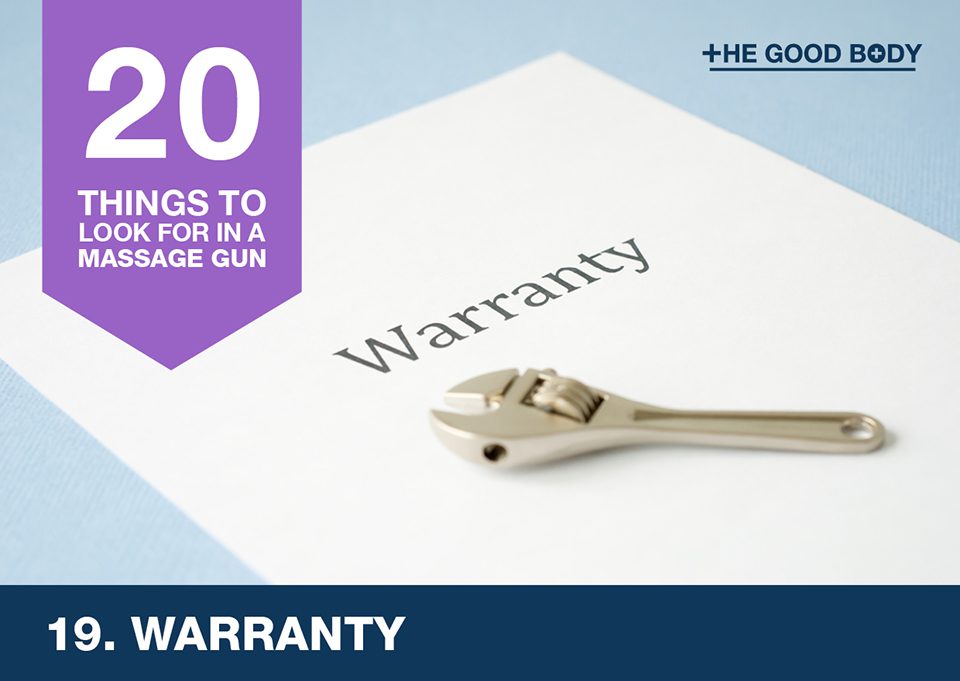
Hopefully nothing will go wrong with your new gadget, but if it does you want to be covered.
Look closely at the warranty offered and be clear on exactly what it covers, so you can be sure your investment is protected.
20. Consumer Reviews
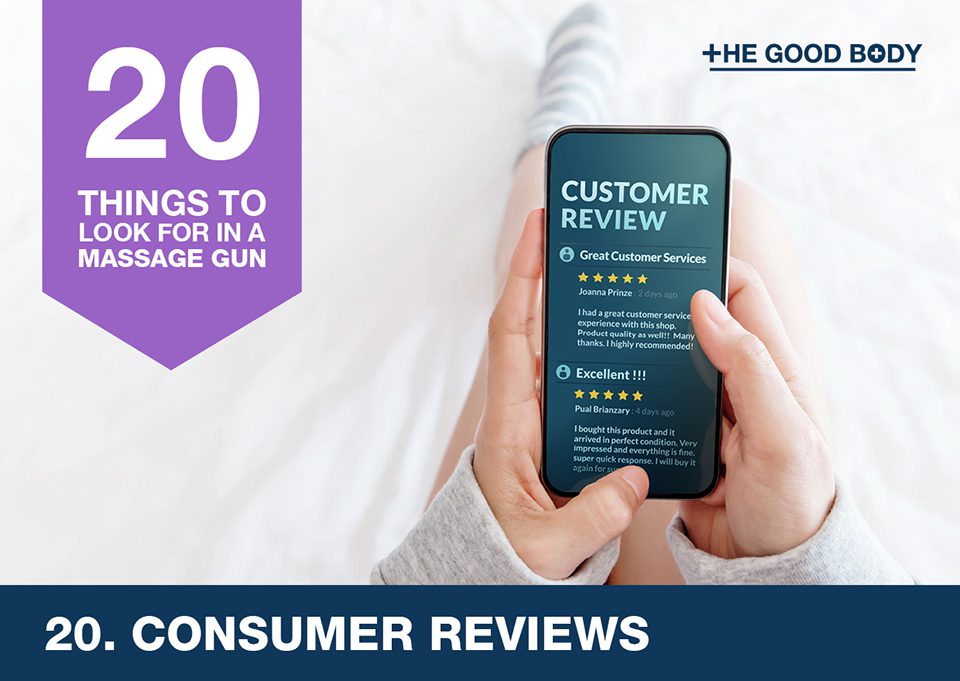
Finally, it pays to understand what other people thought of the product, so read plenty of consumer reviews.
By listening to firsthand accounts, you can work out whether the product is right for your needs.
For example, if people are raving about it as a solution for neck pain, then your sore neck will certainly thank you for the investment!
Alternatively if people are saying that they struggle to get the right grip to treat their back pain, you and your back discomfort might want to look elsewhere!
Now you know what you’re looking for it’s time to start exploring the options.
Read our roundup of a hand-picked selection of alternatives that will hit the mark.



